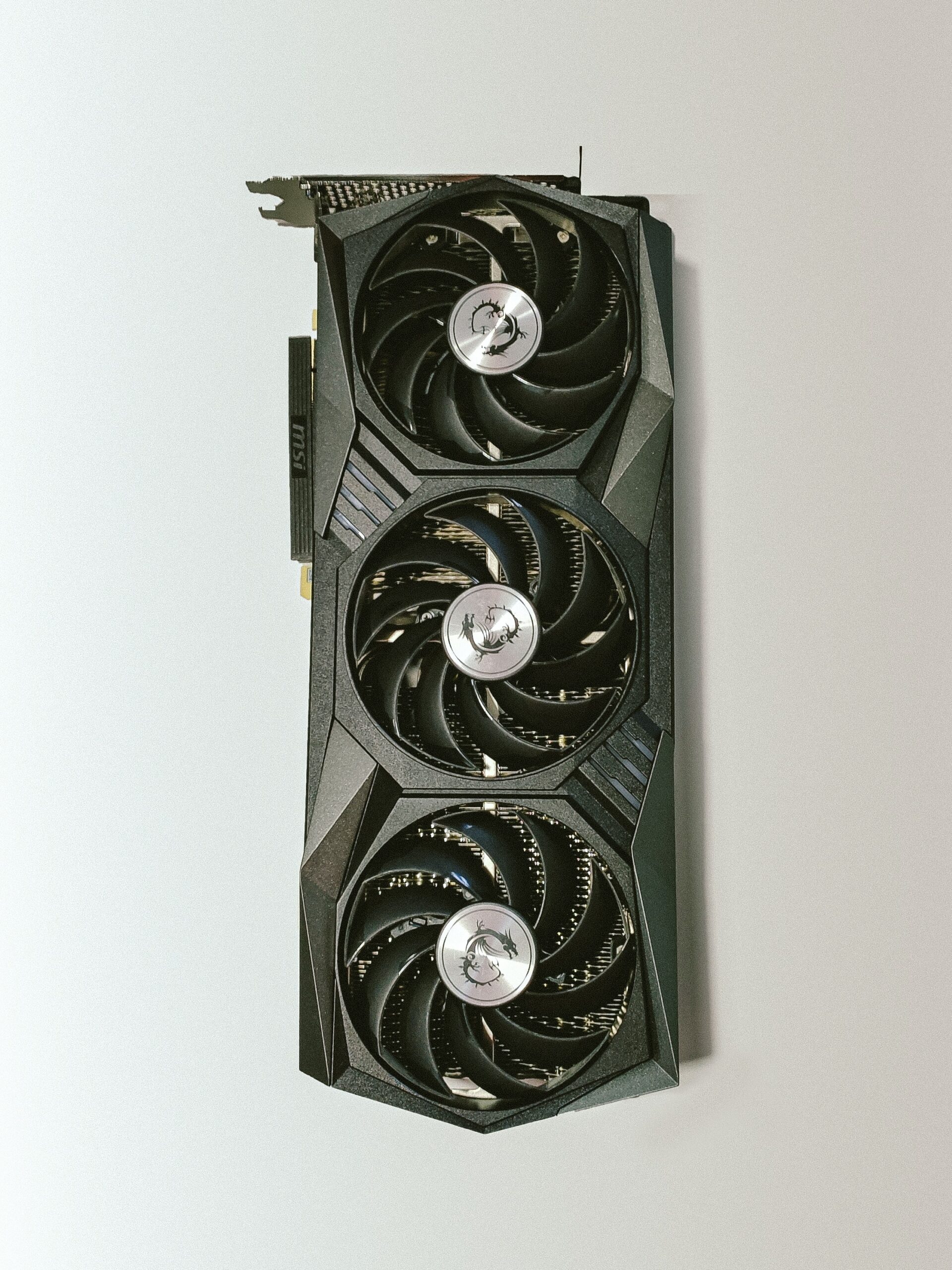Shortage of GPUs in AI: Crisis or Turning Point?

What is a GPU?
A GPU, or Graphics Processing Unit, is a specialized electronic component within a computer that is designed primarily for rendering and processing visual data, such as images, videos, and 3D graphics. GPUs are optimized for performing numerous parallel mathematical calculations simultaneously, making them well-suited for tasks related to computer graphics, gaming, video editing, scientific simulations, and machine learning. They work in conjunction with the computer’s central processing unit (CPU) to accelerate graphics-related tasks and improve overall system performance, especially in applications that require heavy graphical processing.
To understand the difference between a GPU and a CPU I like to use the analogy of cooking in a restaurant kitchen -I mean this is Pancakes & CyberSecurity so what were you expecting-.
Imagine that the CPU is the Chef, like the manager of the kitchen. They are responsible for coordinating and overseeing all the tasks in the kitchen. They can handle a wide variety of tasks, like chopping vegetables, cooking meats, and serving dishes. However, they are excellent at managing the overall process but not very fast at performing individual tasks. Now, think of the GPU as a The Sous Chef, a specialized assistant chef. They are really good at doing one specific thing, like chopping vegetables really fast or grilling steaks to perfection. However, they can’t manage the kitchen or prepare complex dishes like the Chef.
Now, let’s relate this to computer tasks:
Tasks (Dishes): In the world of computers, tasks are like dishes you want to prepare. These tasks can be anything from playing a video game to editing a photo or rendering a 3D animation.
The Kitchen (Computer): Your computer is like a kitchen, and it has both a Chef (CPU) and a Sous Chef (GPU).
The Chef (CPU): The CPU is responsible for managing and coordinating all tasks in the computer. It can handle a wide range of tasks but might take longer for tasks that require a lot of calculations.
The Sous Chef (GPU): The GPU is like the specialized helper for certain tasks. It’s excellent at handling specific types of calculations, like rendering graphics, performing complex mathematical calculations for simulations, or processing large amounts of data quickly.
Feeding the GPU: When you “feed” the GPU, it means you’re giving it the specific tasks that it’s good at. Just like you’d ask the Sous Chef to chop a mountain of vegetables quickly, you’d assign tasks to the GPU that require its specialized processing power.
Balancing Act: Efficient computer usage often involves a balance between the Chef (CPU) and the Sous Chef (GPU). The Chef manages the overall operation, while the Sous Chef takes care of specialized tasks. Some tasks require only the Chef, some only the Sous Chef, and some work best when both collaborate.

How Are GPUs Utilized?
So now let’s focus on the Sous Chef, GPUs are specialized processors used for a variety of tasks beyond gaming. They excel in rendering graphics, enhancing video editing, aiding in 3D modeling, accelerating scientific simulations, powering machine learning and AI, and even cryptocurrency mining. Their parallel processing capabilities make them versatile tools for speeding up complex calculations in fields such as medicine, finance, and artificial intelligence.
GPU Usage in AI: Significance and Impact
Because I don’t want my article to be as long as my shopping list, my primary focus is on the crucial role GPUs play in the field of artificial intelligence. GPUs are instrumental in AI due to their exceptional parallel processing capabilities. AI involves training and running complex neural networks, which require vast amounts of calculations. GPUs excel at handling these computations simultaneously, significantly speeding up the training of AI models. They enable breakthroughs in natural language processing, image recognition, autonomous vehicles, and more. Their importance lies in their ability to handle the intense computational demands of AI, making rapid advancements in this field possible and accessible. Just as a skilled sous chef in a restaurant’s kitchen can rapidly chop, dice, and prepare ingredients for multiple dishes simultaneously, GPUs serve as the culinary wizards of AI. In the realm of AI, where training complex neural networks involves countless mathematical calculations, GPUs perform these operations in parallel, akin to our sous chef efficiently handling multiple tasks at once. This parallel processing power accelerates the training of AI models, transforming them into adept learners for tasks like natural language understanding, image recognition, and autonomous driving. Much like the sous chef’s ability to expedite meal preparation, GPUs expedite AI advancement by swiftly managing the intensive computations essential for cutting-edge AI capabilities.
The GPU Shortage: Origins, Causes, and Key Players
Now that we’ve gained a solid understanding of what a GPU is and how it’s applied in AI, let’s explore a pressing concern: the shortage of GPUs.
The shortage of GPUs began in 2020 due to a combination of factors, including the COVID-19 pandemic, the rising popularity of cryptocurrency mining, and the chip shortage.
- The COVID-19 pandemic caused a disruption to the global supply chain, which made it difficult for GPU manufacturers to get the components they need to make GPUs. Additionally, the pandemic led to an increase in demand for GPUs as people were spending more time at home and playing video games. So more demand but the supply did not follow.
- The rising popularity of cryptocurrency mining also contributed to the shortage of GPUs. Cryptomining is the process of using computers to solve complex mathematical problems in order to earn cryptocurrency. GPUs are well-suited for cryptomining because they are good at parallel processing as mentioned earlier.
- The chip shortage is a global problem that has affected the production of many different products, including GPUs. The chip shortage is caused by a number of factors, including the COVID-19 pandemic, the trade war between the United States and China, and the increasing demand for semiconductors.
Regarding the biggest companies producing GPUs, we have Nvidia, AMD, and Intel. Nvidia is the market leader, with a market share of around 70%. AMD is the second-largest manufacturer, with a market share of around 20%. Intel is the third-largest manufacturer, with a market share of around 10%.
And to give you an understanding of the situation, in 2022, the average price of a GPU was around $500. However, the prices of GPUs have been volatile and have fluctuated significantly. In some cases, the prices of GPUs have been as high as $2,000.
Now to break down numbers for each player:
- In January 2021, the average price of an Nvidia GeForce RTX 3080 graphics card was $700. By December 2021, the average price had increased to $1,200.
- In March 2021, the average price of an AMD Radeon RX 6800 graphics card was $600. By December 2021, the average price had increased to $1,000.
- In April 2021, the average price of an Intel Arc A770 graphics card was expected to be $400. However, the card was not released until December 2021, and the average price was $600.
The impact of the shortage on AI
The shortage of GPUs has had a significant impact on the field of AI. This impact is multifaceted. Firstly, it has resulted in significantly increased costs, driving up the prices of GPUs. This price surge places a heavier financial burden on both AI researchers and businesses, making it more challenging for them to acquire the essential hardware. Secondly, the shortage has caused considerable delays in AI research and development. Researchers have found themselves waiting longer to access the GPUs required for their experiments and projects, slowing down the pace of advancements in AI. Moreover, the scarcity has stifled innovation within the AI community, as researchers have been constrained by the limited availability of GPUs, diverting their focus from exploring new ideas. Lastly, the shortage has disrupted AI services, with businesses struggling to obtain the necessary GPUs to maintain and operate these services effectively. Collectively, these consequences highlight the significant challenges posed by the GPU shortage in the realm of AI.
The ramifications of the GPU shortage reverberate across various industries, including transportation, healthcare, finance, and retail. The delayed development of self-driving cars is a stark example; these vehicles heavily rely on GPUs for processing the extensive data needed to make real-time decisions. As a result of the shortage, companies engaged in autonomous vehicle development have faced significant setbacks, experiencing prolonged waiting times for the essential GPUs. In the field of medical research, AI plays a pivotal role in advancing treatments and diagnostics. However, the scarcity of GPUs has impeded researchers’ ability to create and deploy AI-powered solutions, potentially slowing down progress in healthcare innovation. Furthermore, the financial sector has embraced AI for automating tasks and enhancing investment strategies. The GPU shortage has presented a challenge for banks and financial institutions, making it more cumbersome to implement AI-driven solutions and optimize decision-making processes. Similarly, the retail sector has been leveraging AI to tailor customer experiences and streamline inventory management. Nevertheless, the GPU scarcity has hindered retailers’ ability to deploy these AI-powered solutions effectively, potentially impacting customer satisfaction and operational efficiency.
In essence, the GPU shortage has cast a shadow over the integration of AI technologies in these key industries, highlighting the critical role GPUs play in driving innovation and efficiency across various sectors.
The GPU Shortage in AI: A Challenge or Opportunity?
However, the GPU shortage is also compelling researchers and businesses to explore innovative approaches to harness AI’s potential.
Traditionally, as we’ve seen it, GPUs were pivotal for tasks like machine learning model training, but the scarcity has prompted a quest for alternative methods. This necessity has driven the emergence of novel AI applications, including the exploration of alternative hardware and the development of inventive algorithms. Researchers, for instance, are actively crafting novel algorithms designed for greater efficiency and compatibility with less powerful hardware. An illustrative instance of this innovation is seen at Stanford University, where researchers have pioneered an algorithm capable of training machine learning models on CPUs, even those 100 times slower than GPUs. Businesses, too, are embracing innovation by exploring alternative hardware solutions for AI, such as Field-Programmable Gate Arrays (FPGAs) and Application-Specific Integrated Circuits (ASICs). These specialized chips can be tailored to execute specific tasks, making them particularly well-suited for applications like image recognition. Moreover, cloud computing providers are responding to the GPU shortage by offering GPU-as-a-service (GaaS) solutions, allowing businesses to rent GPUs on a flexible, pay-as-you-go basis, potentially offering a more cost-effective means of GPU access compared to outright purchase.
Furthermore, the GPU shortage underscores the urgency for AI technologies that rely less on GPU resources. This urgency is propelling efforts to craft more efficient AI algorithms capable of running on less powerful hardware. Finally, the scarcity is catalyzing increased investments in AI. Although costs are increasing, this increased investment is set to accelerate the advancement of emerging AI technologies and solutions, potentially opening the door to revolutionary breakthroughs in the field.
Although the GPU shortage is a transient challenge, its impact is fostering a culture of innovation within the AI community.
What are your thoughts? Is the shortage a crisis for AI, or could it be a turning point leading to breakthroughs in the field?
Sources:
VentureBeat: Nvidia GPU Shortage Is ‘Top Gossip’ of Silicon Valley, by Dean Takahashi, published on February 17, 2023.
Wired: Nvidia Chip Shortages Leave AI Startups Scrambling for Computing Power, by Andy Greenberg, published on February 24, 2023.
TechnoLynx: Navigating the Potential GPU Shortage in the Age of AI, published on February 21, 2023.
OctoML: How Bad is the AI Compute Shortage, Really?, by OctoML, published on November 17, 2022.
Xilinx: What is an FPGA?, by Xilinx, published on January 20, 2023.
Run:ai: GPU as a Service (GaaS), by Run:ai, published on March 8, 2023.
